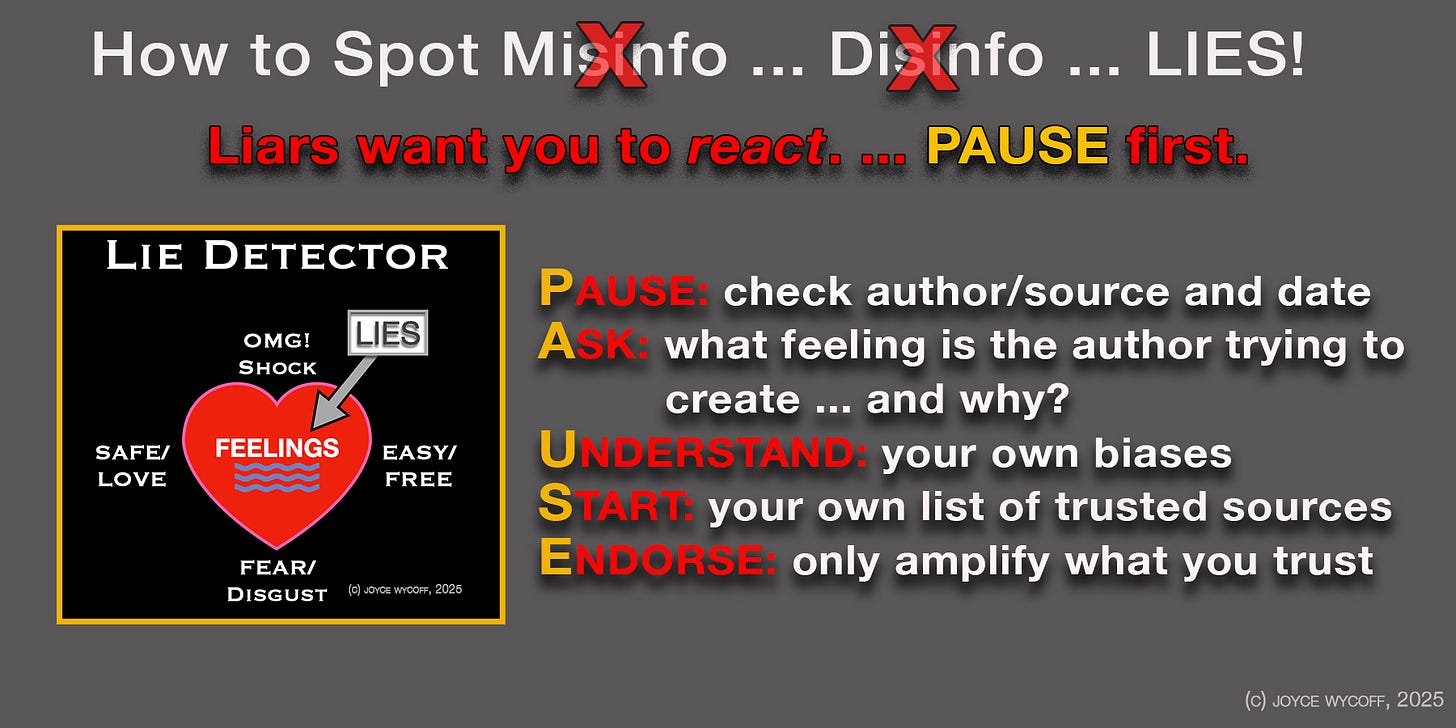It was an exciting post … finally someone was speaking bluntly about what we should be doing. And the someone was a person I had great respect for. I immediately posted it and blasted it to some other feeds.
It didn’t take long before corrections started trickling in … fortunately, gently … and, fortunately, it was a confusing mistake rather than a deliberate lie, and one I could correct rather easily.
However, it taught me a lesson and prompted a process I plan to use in the future. You may remember the letter and the corrected post:
We had a lot experience with lies in Trump’s first administration. The Washington Post identified 30,573 “false or misleading” claims … lies. We’ve learned that DT should not be a trusted source. However, we live in a whirlwind of information flying by so rapidly it’s almost impossible to fact check everything, so I wanted a quick way to sort out what I needed to verify and what I could just let go as noise.
Turns out there are a lot of recommendations available, from librarians to organizations like UNICEF and the US Army. If the model above doesn’t work for you, find one that does.
Deliberate misinformation aims for feelings.
Liars, con men, grifters, promoters, manipulators, narcissists, propagandists, marketers and advertisers carefully craft their messages to create a reaction, to spark feelings that will elicit a desired action. With the instant message cycle of the internet, we are now bombarded daily with words designed to make us react.
It’s good to understand that every message that comes your way has a purpose … from a simple “hi, how are you?” to “the world will end if you don’t send $3.29 by noon.” (BTW, the purpose of this post is to help me … and you … avoid trusting messages that are purposefully untrue.)
We see examples like this everyday as Trump world talks lies about their efforts to erase “the worst of the worst” … using words like: migrant criminals … illegal monster … killers … gang members … poisoning our country … taking your jobs … the largest invasion in the history of our country … to create fear, disgust, and horror in order to justify using illegal tactics and subverting due process and the Constitution.
They are so blatant about what they’re doing, most of us can recognize the messages as outright propaganda or lies. However, when these messages connect with a deep level of feeling … especially fear or disgust … those messages are absorbed and believed. Even facts proving immigrants, whether legally here or not, have a lower crime rate than US citizens, don’t stand a chance of being heard over the roar of fear instilled by men (and women) who want to rush immigrants to a gulag in El Salvador without bothering to find out if they are actually even criminals or here illegally.
What I resolved after my experience with the not-Liz Cheney’s letter was to watch for those emotional reactions and to go through the PAUSE process before continuing. It makes me feel a little more confident in what I’m sharing with the world.
In my case, I have to also work harder to not automatically dismiss anything that comes out of the White House as a lie. I’m trying to practice pausing and asking, “Could this possibly be true?” Generally, it’s just, “Nah … just more lies.” However, I know that could just be my bias showing.
BTW: When this ends … and it will end … at some point, we will get back to trying to create a better nation for all our people, and this list of 17 Sustainable Goals from the United Nations is an interesting way to think about what we might want to create. Click here to review this brief report.







With so much misinformation around it is hard to know what to believe
Great advice. There's misinformation on BOTH sides. Sigh. It's getting harder and harder...